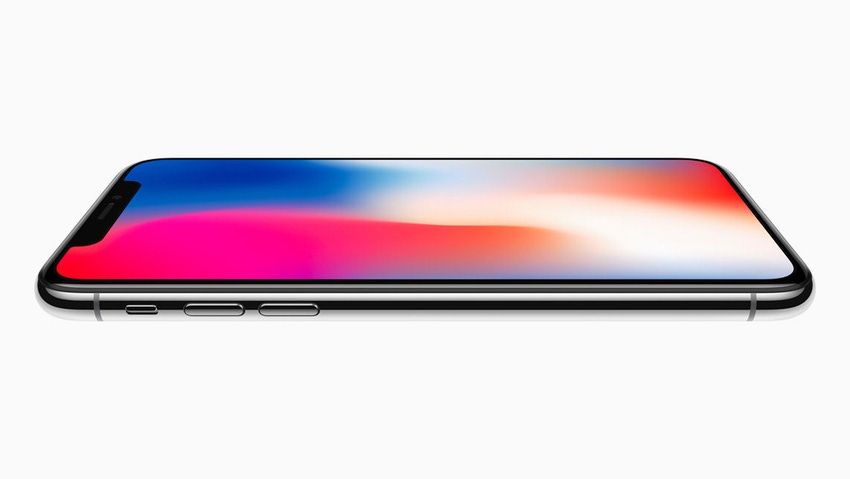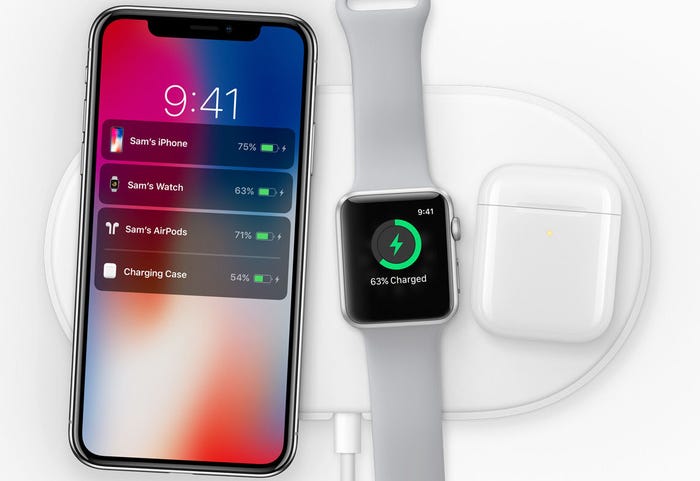Apple has finally unveiled the extensively leaked iPhone X ultra-premium smartphone but the $1,000 price point risks alienating many loyalists.
September 13, 2017

Apple has finally unveiled the extensively leaked iPhone X ultra-premium smartphone but the $1,000 price point risks alienating many loyalists.
Among the iPhone X headline features are a 5.8-inch ‘super retina’ display, which covers almost the entire front face of the device and which Apple somewhat snottily describes as ‘the first OLED panel that rises to the standards of iPhone.’ There’s a new SoC – the six-core A11 Bionic chip that Apple claims is 70% faster than the previous one and there’s ‘3D facial recognition’ which is supposed to be better than the current alternatives.
“For more than a decade, our intention has been to create an iPhone that is all display,” said Jony Ive, Apple’s chief design officer. “The iPhone X is the realisation of that vision. With the introduction of iPhone ten years ago, we revolutionised the mobile phone with Multi-Touch. iPhone X marks a new era for iPhone — one in which the device disappears into the experience.”
“iPhone X is the future of the smartphone,” said Philip Schiller, Apple’s head of marketing. “It is packed with incredible new technologies, like the innovative TrueDepth camera system, beautiful Super Retina display and super-fast A11 Bionic Chip with neural engine. iPhone X enables fluid new user experiences — from unlocking your iPhone with Face ID, to playing immersive AR games, to sharing Animoji in Messages — it is the beginning of the next ten years for iPhone.”
As you’ve probably worked out for yourself the iPhone X naming is derived from the roman numeral for ten – signifying the tin anniversary of the exalted gadget. Apple clearly felt the need to make some kind of symbolic gesture and accordingly reserved most of its headline new features for the X, to the detriment of the iPhone 8 and 8 plus, which were launched at the same time.
But at what cost? The X starts at $/£1,000 while the 4.7-inch 8, which doesn’t have the new super-duper display and facial recognition but does have the A11 chip, starts at $/£700 so Apple is charging a lot for that screen which, incidentally, is probably supplied by Samsung.
This creates a real dilemma for iPhone users. Talking to a few of them after the launch the general feeling was not only that £1,000 is too much but that the very existence of the X significantly reduces the appeal of the 8 or 8 plus as they now seem like second-rate phones in comparison. The fact that the X isn’t even available until the end of October might make buying an 8 before then feel like even more of an anti-climax.
Time will tell whether this is representative of broader market sentiment but Apple’s triumphalism has the potential to backfire significantly as loyalists opt to hang onto their existing phones for at least another year rather than either break the bank or upgrade to an iPhone 8 that doesn’t even feature many of the latest gizmos. Then again the X could be a massive success causing Apple’s $250 billion cash pile to grow faster than ever.
Geoff Blaber of CCS Insight reckons the X is more indicative of a long-game from Apple. “The iPhone X is a long-term investment by Apple that sets a template for the next generation of iPhone hardware,” he said. “We expect OLED displays and the new design to become standard iPhone features for years to come. A staggered introduction of OLED technology and the new design enables Apple to steadily ramp up scale in its supply chain and maximise profits.
“At $999, the iPhone X is priced to be a natural increment beyond the iPhone 8 Plus. The higher price of the 256GB variant adds a new ‘super-premium’ product tier beyond the existing 256GB iPhone 7 Plus, which costs $969. It creates an aspirational ‘halo’ product at the top of Apple’s growing iPhone portfolio.”
The other significant announcement from Apple was the Apple Watch 3 which, as rumoured, is the first to feature an LTE modem. Among the additional cleverness is the inclusion of an eSIM that uses the same number as the owner’s iPhone, which will presumably be quite popular with potential Apple Watch buyers.
But this doesn’t address the issue that has blighted the smartwatch category from the start: its limited utility. Until a genuinely useful new UI paradigm is created smartwatches will remain glorified fitness bands and the inevitable Apple price premium – the AW3 starts at £400 – makes a purchase even harder to justify.
“Well I don’t know about you but I just think it’s too much to have to pick your phone up from your pocket when someone calls,” said one iPhone owner when asked if they were tempted to buy an Apple Watch. “I mean, who’s got time for that in their busy modern lives? In fact, I’m going to get two and wear them both on either wrist, in case someone calls and I’m scratching my arse with my left hand at the time.”
The final announcement was a version of Apple TV that supports 4K video, which was generally viewed as a catch-up move rather than anything new. There was disappointment that Apple doesn’t seem to have gained any ground when it comes to licensing content, let alone creating its own, and TV looks set to remain a ‘hobby’ for Apple for another year. There was also a preview of an Apple wireless charging mat set to launch next year that will charge the latest devices and is unlikely to be cheap.
Apple tends to experience a spike in sales when it moves to a new form factor as opposed to just a spec upgrade. This is one of those times, so on historical precedent alone this should be a successful launch for Apple. But the $/£1,000 price point is a significant PR negative for Apple right now and the creation of a new category could diminish the others further down the stack. If Apple creates mass-market tolerance for four-figure pricing then this launch will be viewed as a success, but that’s a big if.

About the Author(s)
You May Also Like








.png?width=300&auto=webp&quality=80&disable=upscale)


_1.jpg?width=300&auto=webp&quality=80&disable=upscale)


.png?width=800&auto=webp&quality=80&disable=upscale)